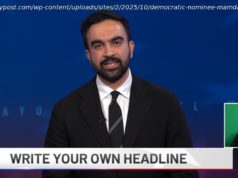A new report analyzes what would happen if the administration failed to pay the cost-sharing reduction subsidies.
This is the web version of VoxCare, a daily newsletter from Vox on the latest twists and turns in America’s health care debate. Like what you’ re reading? Sign up to get VoxCare in your inbox here.
President Donald Trump’s threats to withhold key health law subsidies could cause Obamacare competition to decline and premiums to rise 20 percent, a new Congressional Budget Office report estimates .
The nonpartisan office released a report Tuesday, in which it analyzed what would happen if the Trump administration announced this month that it would not pay cost-sharing reduction subsidies, which reduce copayments and deductibles for low-income Obamacare enrollees, in 2018.
Trump has repeatedly threatened to withhold these subsidies in order to cause the Affordable Care Act to implode.
The CBO does not think the marketplace would fall into shambles if these payments were withheld. Instead, it would hobble along with higher prices and less competition. And, in a weird twist, the move would actually cost the government $194 billion over the next decade.
How does ending a funding stream cost the government money? A bit of background is helpful. Obamacare has two types of insurance subsidies:
The premium subsidies are tethered to how much Obamacare enrollees earn. They cap how much a given enrollee is expected to spend on his or her monthly premiums. Someone who earns 200 percent of the poverty line, for example, is expected to pay 6.4 percent of her income on premiums to purchase a midlevel plan. The government kicks in the rest.
If the Trump administration were to end the cost-sharing reduction subsidies, CBO estimates that premiums for midlevel health plans would rise 20 percent in 2018 and 25 percent by 2025. Insurance plans would raise their premiums to offset the lost funding.
And those higher premiums would mean the federal government has to spend $194 billion more in subsidies to help pay those higher premiums.
So to repeat that one more time: It will cost the federal government nearly $200 billion to end the cost-sharing reduction subsidies. For that extra spending, the federal government would have a market with higher premiums and less competition. Trump talks a lot about making deals. This does not sound like a very good one.
The CBO report lays bare the fact there aren’t really any upsides to ending the cost-sharing subsidies. There are only downsides: higher premiums, higher deficits, less competition. (CBO estimates that if the CSRs were ended, about 5 percent of ACA marketplaces would be areas with no Obamacare plans „because of substantial uncertainty about the effects of the policy.“)
But one of the things I found the most surprising about the CBO report is how resilient the agency thinks the health care law would be to this change. Yes, there would be short-term chaos in the marketplaces. But in the end, the agency thinks that the marketplaces would adjust to the change in policy and make do. There would be no death spiral or grand collapse.
For example, while the CBO expects 2018 to be rocky, it thinks more health plans would join up within two years as they had time to analyze the change. „By 2020, though, insurers would have observed the operation of markets in many areas under the policy and CBO and JCT expect that more insurers would participate, so people in almost all areas would be able to buy nongroup insurance, “ the report estimates.
The CBO actually estimates that the uninsured rate would be lower in 2020 if the CSR payments went away. The agency expects that 1 million more people would have coverage by that year because of the higher spending on the premium subsidies.
With more money spent on premium subsidies, a CBO staff member estimates, slightly more people will decide to buy health coverage.
This CBO report suggests that while Trump could cause temporary chaos in the Obamacare marketplaces — and do so at great cost to the federal government — it’s going to be awfully hard to cripple it entirely. The health care law is not one that will die easily.
Nevada’s empty counties get filled — leaving just two with zero 2018 options. Centene announced Tuesday afternoon it would fill the 14 rural Nevada counties that had no plans signed up to sell 2018 Obamacare coverage. This leaves just two counties — one in Wisconsin and one in Ohio — that are currently without any 2018 options.
With research help from Caitlin Davis
Today’s top news
Analysis and longer reads
Are you an Obamacare enrollee interested in what happens next? Join our Facebook community for conversation and updates.
Start
United States
USA — Financial CBO says Trump's Obamacare sabotage would cost $194 billion, drive up premiums...






